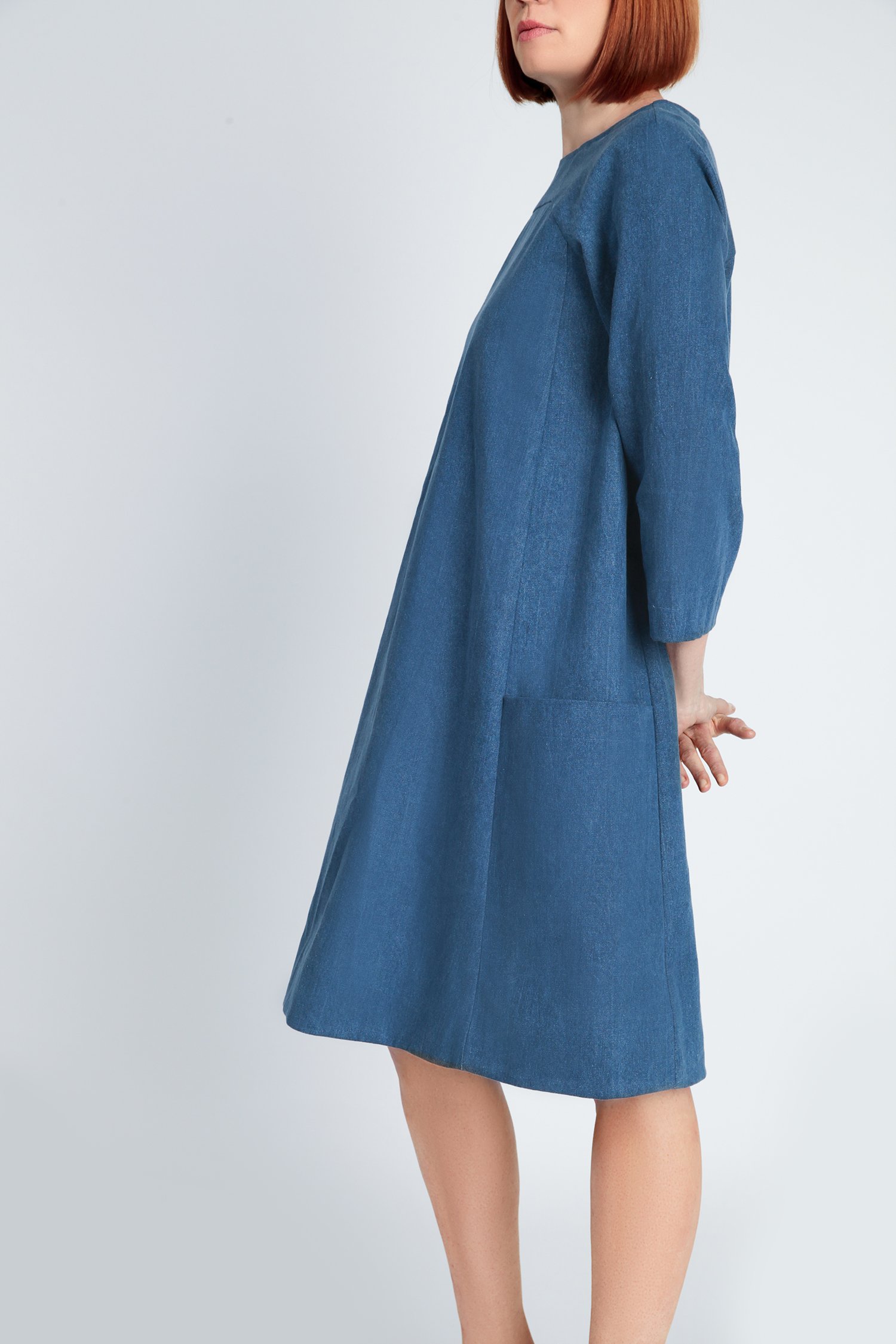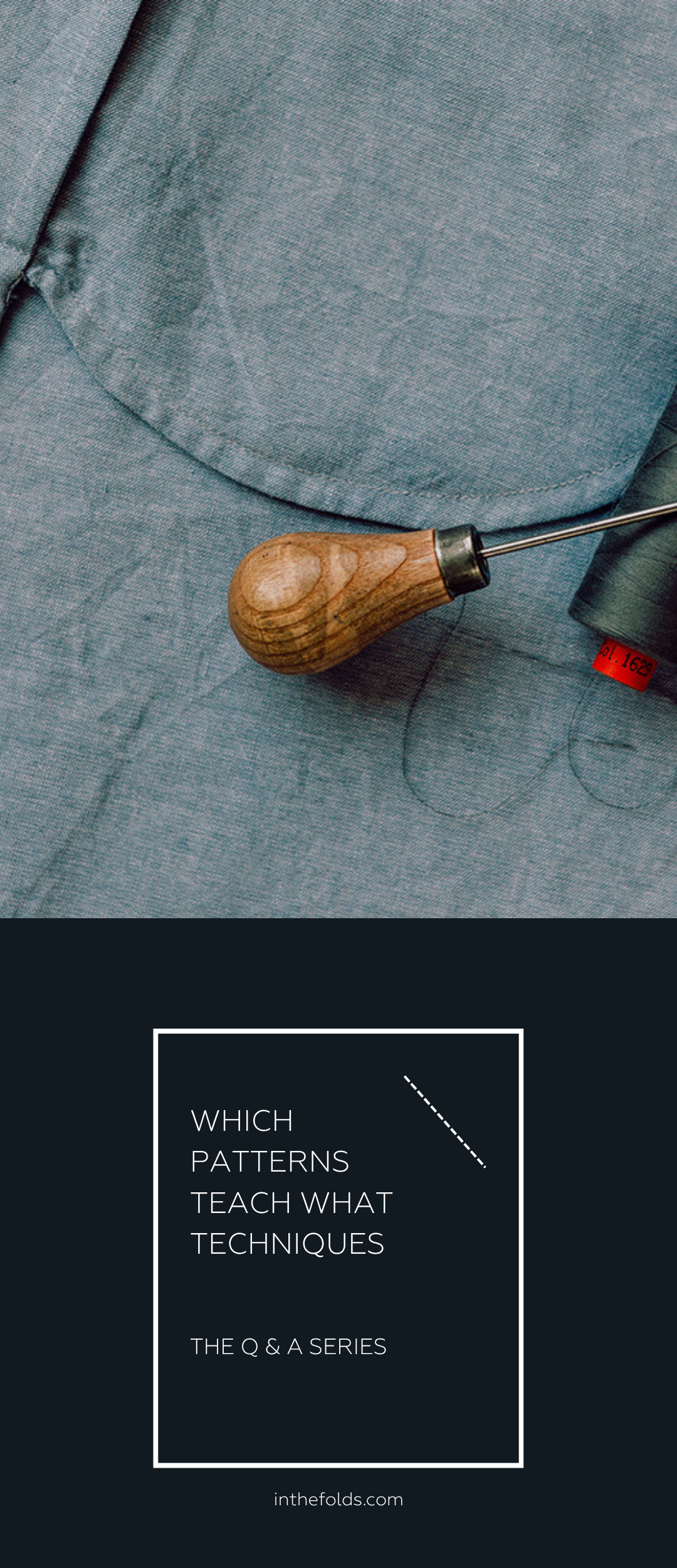THE Q & A SERIES
CHOOSING FABRIC FOR THE RUSHCUTTER DRESS
Hello In the Folds!
Would you say the Rushcutter dress could be made in a fine cotton corduroy? I’m thinking of running the corduroy horizontally for the side panels. And I’d make it sleeveless to wear turtlenecks under it in the autumn and winter.
Being a “confident beginner” in sewing, but not so confident in fabric selection I’d appreciate your thoughts on if this would be a good fabric choice.
By the way, your patterns are beautiful, and I’m equally impressed with your print materials and the design of your website. Such a beautiful, and elegant approach to design, all the way around.
Thank you!
Amy
Hi Amy,
Wow! Firstly, thanks so much for your lovely compliments. It’s very nice to receive feedback like this and know that all our hard work doesn’t go unnoticed. The entire In the Folds team really appreciates it!
You’re not alone in struggling to match fabrics to sewing projects.
It can be tricky, especially when you’re just starting out, but I’m pleased to say that it definitely gets easier over time. Like most things, it just takes practice, and unfortunately a few mistakes! The good thing is that we can learn just as much from the failures as the successes.
Since we’d all prefer not to have to learn the hard way, I’ll share some tips that can help you gain confidence in selecting the right fabric for the project.
Use your wardrobe as a resource
Look at the garments you already have in your wardrobe and think about how they hang, drape and sit on the body. Check the fibre content of the fabric, and think about how they feel. If there is a piece you really love, take it with you next time you are fabric shopping and use it as inspiration!
Of course the above option doesn't work if you shop for fabric online. If this is the case, many independent online fabric retailers will send out samples for a small fee. Order some samples and compare them to the fabrics in your wardrobe.
Our Slow Sewing Planner is a great resource to help you understand your wardrobe choices so that you can then apply the information to the garments you are making. Check it out here!
Shop for fabric at op shops (thrift stores)
This will give you a chance to work with a variety of fabrics whilst also not breaking the bank. It might also encourage you to step out of your comfort zone with your choices.
Follow makers with a similar style / aesthetic to you
Lots of makers include fabric details with their photos on social media so you can see how the fabric works for a particular pattern and how it looks on the body. Create a folder on Instagram so you can save fabrics and pattern combinations you like.
Search social media hashtags
If there is a particular pattern you like, use the hashtag function to see what fabrics other makers have made it in. If you see a version you like and the maker hasn’t included the details, ask them! As you probably already know, makers love to talk about anything sewing and fabric related. I’m sure they’ll be flattered to hear that you love their make and would like to make one of your own.
You can follow us on Instagram here, and check out the Rushcutter dress hashtag here.
Be willing to make mistakes
This is a big (and sometimes painful…) one! But, often our best lessons are learned through making mistakes.
Let yourself explore different options and ideas so you can learn what fabrics work for different patterns. Accept that you’re still going to get surprises sometimes. I have been sewing for about 25 years and still get a surprise every now and again.
Selecting fabric for the RuShcutter dress
We recommend light to mid-weight fabrics such as: cotton shirting, poplin, sateen, linen, silk, light to mid-weight wool, chambray or light to mid-weight denim.
Your fabric choice will have a big impact on the silhouette you will achieve. For a more structured, boxy look, consider mid-weight denim, twill or jacquard. Or, for a more relaxed, draped look, consider a viscose blend or silk crepe de chine.
Fine cotton corduroy would be a great choice and would be lovely to wear turtlenecks underneath.
My only other tip would be to select a size that gives you a bit of extra wiggle room in the top area so the underarms don't feel tight with a shirt underneath. Good luck!
Happy sewing,
Emily
For more issues of the Q & A series, you can check out the archive here.
WHAT YOU’VE BEEN MAKING
Rushcutter dress made by @shuaychong
Barkly skirt made by @sew.n.steady









